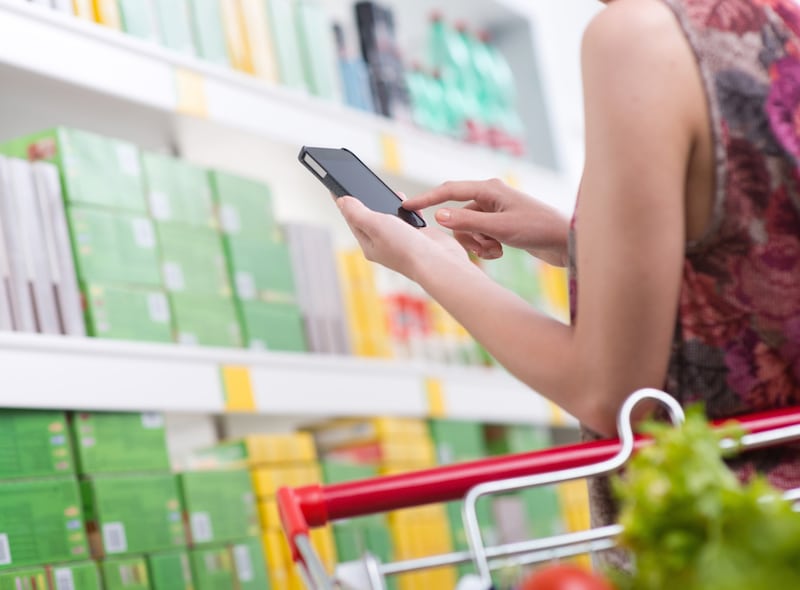You step inside a supermarket and your shopping list is transformed into a personalized map, showing you the deals that’ll appeal to you most. You pause in front of a concert poster, pull out your phone, and you’re greeted with an option to buy tickets with a single tap. Welcome to the world of location based services (LBS).
“It’s been the next big thing for, like, five years,” said Dan Ryan, CEO of Boston-based LBS software firm ByteLight, who have been at the centre of an acquisition by market leading lighting solutions provider Acuity Brands.

Earlier this month, Acuity Brands announced that it has acquired for cash certain assets, including the patent portfolio and all other intellectual property rights, of ByteLight, a provider of indoor location software for LED lighting. The combination of ByteLight's technology with Acuity Brands' Visible Light Communication (VLC) enabled drivers and LED lighting platforms provides retailers with a method of delivering digital content to shoppers.
Others in the lighting industry are getting serious about the idea, too. Last year, Dutch electronics giant Philips announced that it was working on LED lighting systems that can track and communicate with smartphones. The Philips system is also based on VLC, and through such a system, pulses of light that can be picked up by a smartphone’s camera, but are too quick to be perceived by humans, and can be used to transmit data.
We've also previously written about pureLiFi and the research work done at the University of Edinburgh to develop Li-Fi.
With governments around the world mandating higher efficiency standards for lighting, manufacturers are trying to get ahead of the next big switch in lighting infrastructure for business customers. And they’re also grappling with bulbs that last a lot longer, Ryan notes, which means fewer bulbs being purchased over time. “So the question that the lighting industry faces is, where is my margin tomorrow”?
And since LED lights are already a digital technology, these companies would clearly like to have some of that future profit margin come from additional digital services that can be added to lighting systems; again a significant trend we've covered extensively in our research - "Wireless Lighting Controls 2014 to 2018" and "LED Lighting in Buildings 2014 to 2018".
[contact-form-7 id="3204" title="memoori-newsletter"]
“The opportunity for indoor location is beyond just the obvious, `Hey, I’m giving you promotions’”, states Ryan. “It is going to be an enabling technology for applications and services that we couldn’t even conceive, in the same vein as GPS. Nobody predicted Uber when GPS first came out. Indoor location is going to be just as transformational”.
While LBS through LED lighting systems offers an innovative solution to apply LBS through a platform that is already set for widespread rollout across the world, it is not the only LBS technology. Bluetooth allows very high levels of location accuracy within a defined space by triangulating a phones position in relation to just a few Bluetooth devices.
When Apple first presented its Bluetooth LBS technology ‘iBeacon’ to developers at their World Wide Developers Conference WWDC, they used the example of an art museum. Instead of punching a three-digit number into a handheld tour guide, you could walk up to a painting, pull out your iPhone, and find additional information on the artwork right there waiting for you.
Bar Kick, a hipster sports bar in London’s fashionable Shoreditch, took a more novel approach. Anyone sitting inside the bar will find the most recent digital editions of two popular magazines ready to read in their smartphone or tablet device’s newsstand app, free of charge. Potentially spelling the end of a pile of old magazines in cafés, bars and even your dentist’s waiting room.While Citi Field, home of the New York Mets, has been experimenting with embedded videos, dynamic hot dog coupons, and straight-to-your-seat navigation, creating the augmented sports stadiums of the future.
The opportunities are endless, and like the general IoT movement the market predictions are considerable. According to a TechNavio report Indoor LBS Market in the US is expected to witness significant growth during the period 2014 - 2018. This is mainly attributed to the increasing number of innovations in indoor LBS technology and its growing adoption in recent years. Overall, the market is expected to grow at a CAGR of 44.87% during the forecast period.



